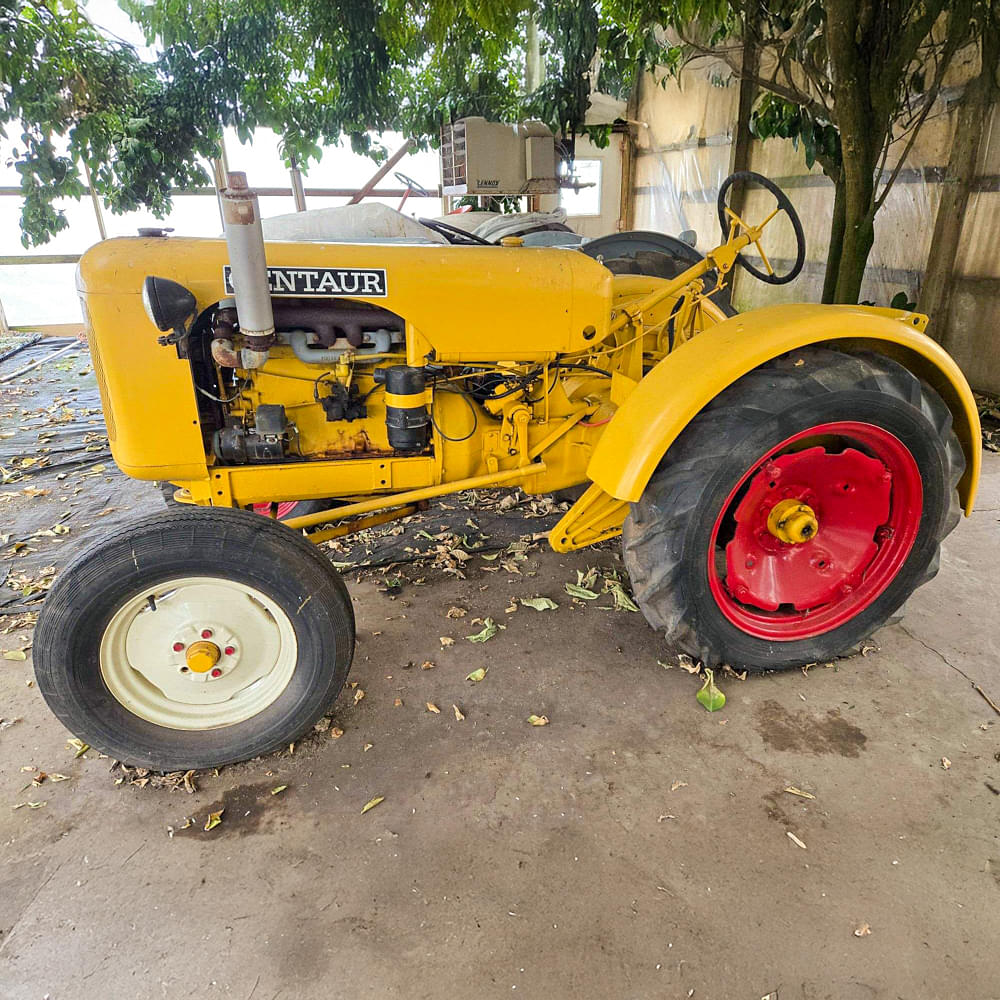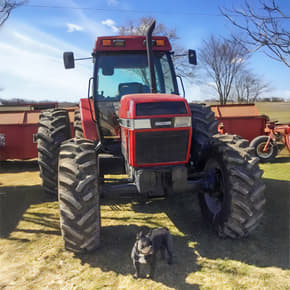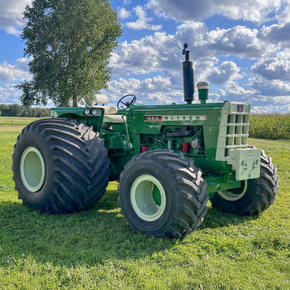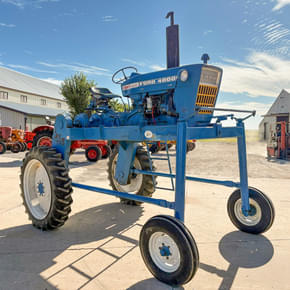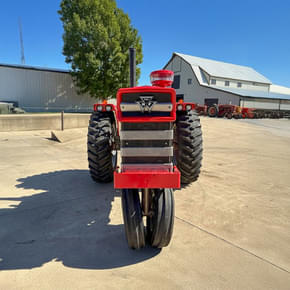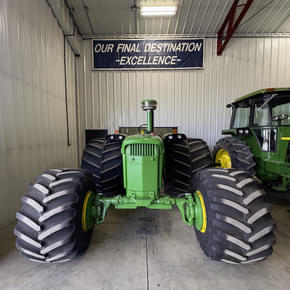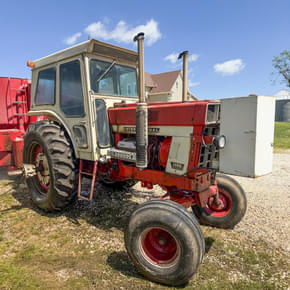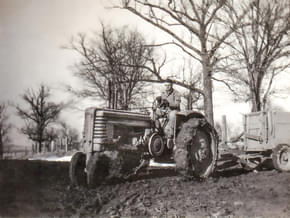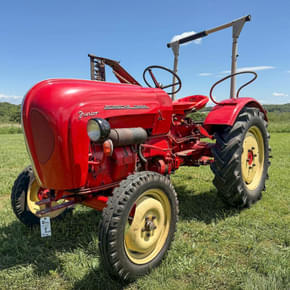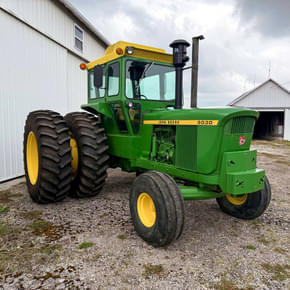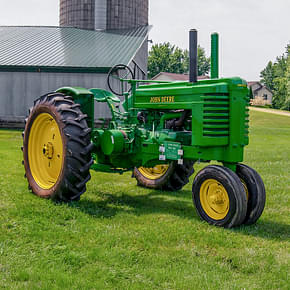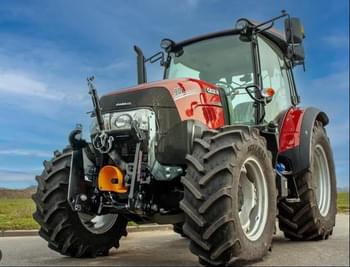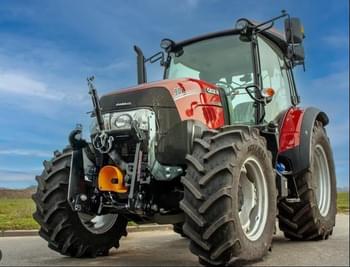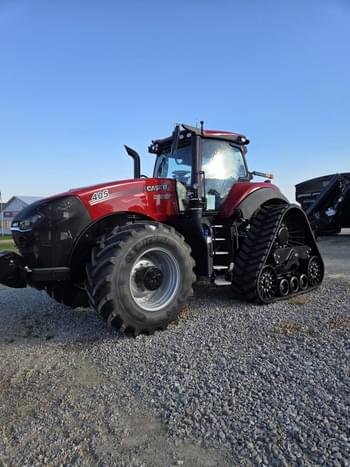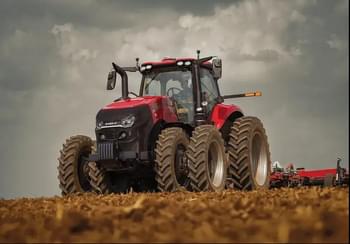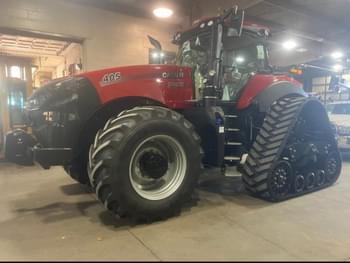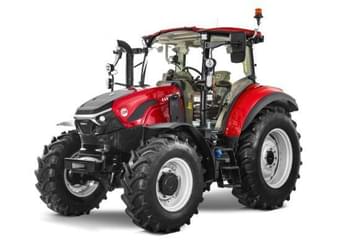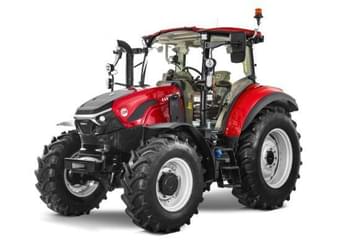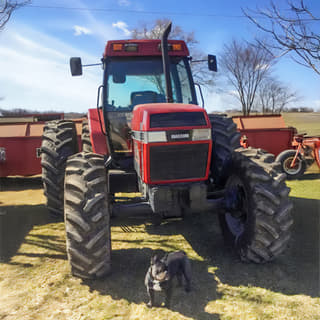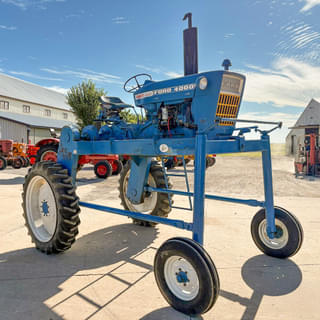Y’know, there are some tractor companies out there that have truly amazing stories; the Centaur Tractor Corporation isn’t one of ’em, if I’m being honest. That doesn’t mean that they’re not interesting, it’s just that they don’t have the industry accolades that others do. However, for some farmers, a Centaur replaced a pair of horses or a team of mules. For that reason alone, they deserve a little spotlight, because the move to mechanized farming is pretty revolutionary.
Browse Centaur & LeRoi tractors listed on TZ
So what’s the story on Centaur? Well, let’s dig in!
Central Ohio Tractor Company
Before there was Centaur, there was the Central Ohio Tractor Company. Based in Greenwich, Ohio, they got their start around 1919. By 1921, they’d built a small factory on a 3-acre plot and started cranking out a modest little tractor called the Model A. It was a walk-behind/sulky-style machine powered by a 6-horsepower, air-cooled two-cylinder engine from New Way. Judging by the few surviving photos, it might’ve been one of the most rickety contraptions ever bolted together—picture a rototiller on steel wheels, minus the tiller, with hand levers for steering. But hey, everyone’s got to start somewhere.
Replacing the horses
Over the next five years, they kept tinkering and improving. By 1926, their design had come a long way. They’d upgraded the engine for a 10-horsepower, water-cooled LeRoi twin and added a proper rack-and-pinion steering system—which meant, finally, a steering wheel. They also made the tractor compatible with Centaur-branded implements (most of which were sourced from Oliver), and even better, you could still use your existing horse-drawn equipment. It was a pretty flexible setup, and not terribly expensive, either—$484 got you the tractor and a set of extension rims. A year or two later, they bumped the engine up to 12 horsepower.
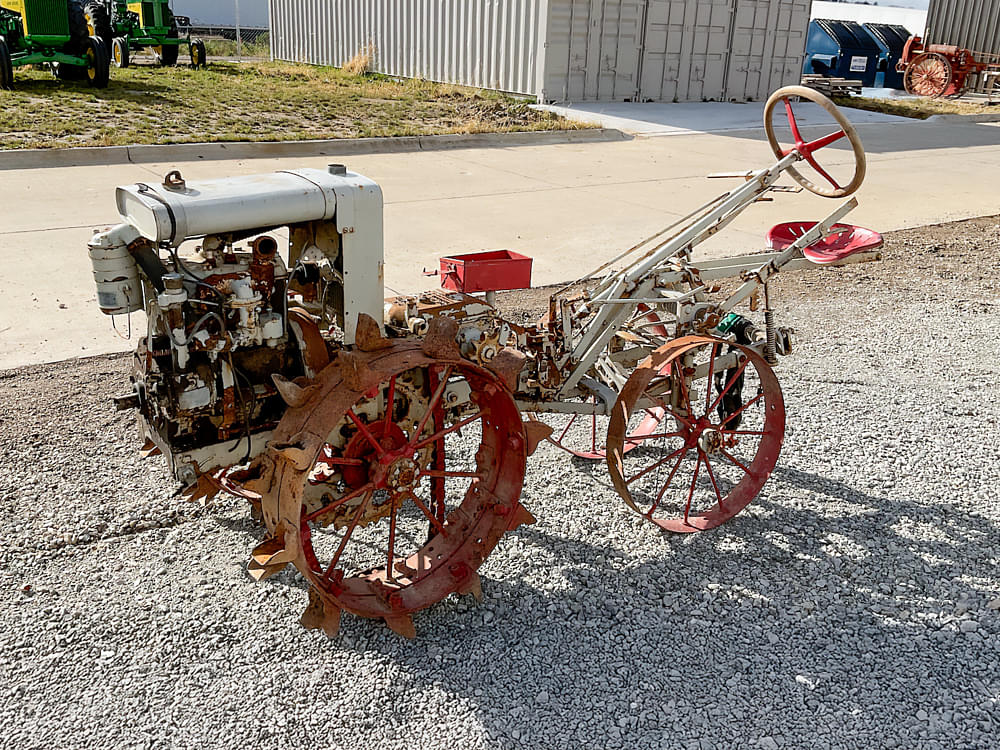
What they were aiming for was simple: give small farmers an easy path to put the horses out to pasture. At the time, it was still mostly the early adopters jumping on board. But the math was starting to make sense. A good team of Belgians or Percherons? About $400. Plus hay, oats, and downtime. The little Centaur? Just gas and oil. That’s a pretty easy sell.
Centaur Tractor Corp.: The “okayest” tractor company out there?
So in 1929, they doubled down and rebranded as the Centaur Tractor Corporation. The name, taken from Greek mythology, symbolized a creature that was half man, half horse—perfect for a tractor meant to do the work of both. Their ad copy leaned into it: “Does the work of a man and a horse.” Not bad. But the slogan? “Not better than other tractors, but as a replacement for the horse.” Yikes. Sounds like something out of Crazy People — remember that Dudley Moore movie? “Volvo: They’re boxy but they’re good.”
Still, despite the painfully average marketing, Centaur weathered the Depression selling those little tractors. Plenty of others didn’t.
The Klear View
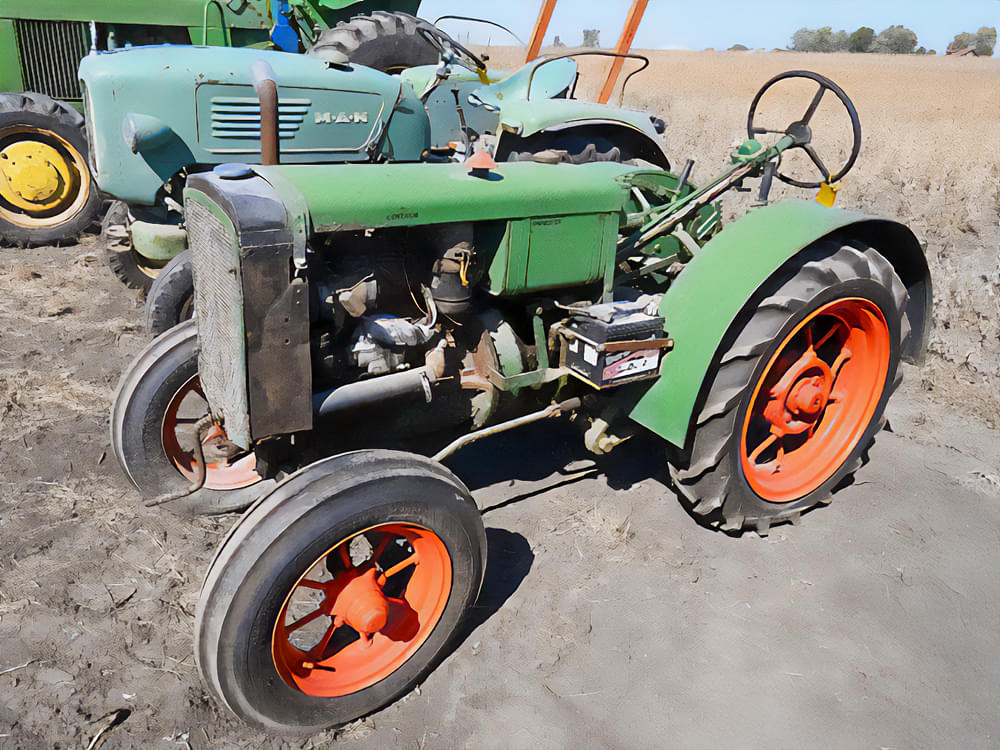
As time went on, Centaur did something smart—they listened to their customers. Honestly, it’s still one of the best business strategies out there. Heck, it’s one of our core values today at Tractor Zoom. Farmers wanted a more traditional tractor, but with the great visibility the old sulky-style machines offered. So Centaur paid attention.
In 1936, they were awarded a patent for a new design with one clear goal: “to provide a tractor in which the relationship of the various parts is such as to provide greatly increased visibility for the ground surface immediately adjacent to and in front of the operator.”
That idea became the Klear View line. It was compact, unstyled, and purpose-built to give operators a clear view of the ground. How’d they do it? First, the whole machine was tiny—45 inches wide, 45 inches tall, with a 60-inch wheelbase. Second, they moved the seat way back—farther than just about any other tractor I’ve seen. And third (for better or worse), they skipped the operator platform entirely. Yep, you drove it sitting down with your feet on a crossbar and worked everything with your hands.
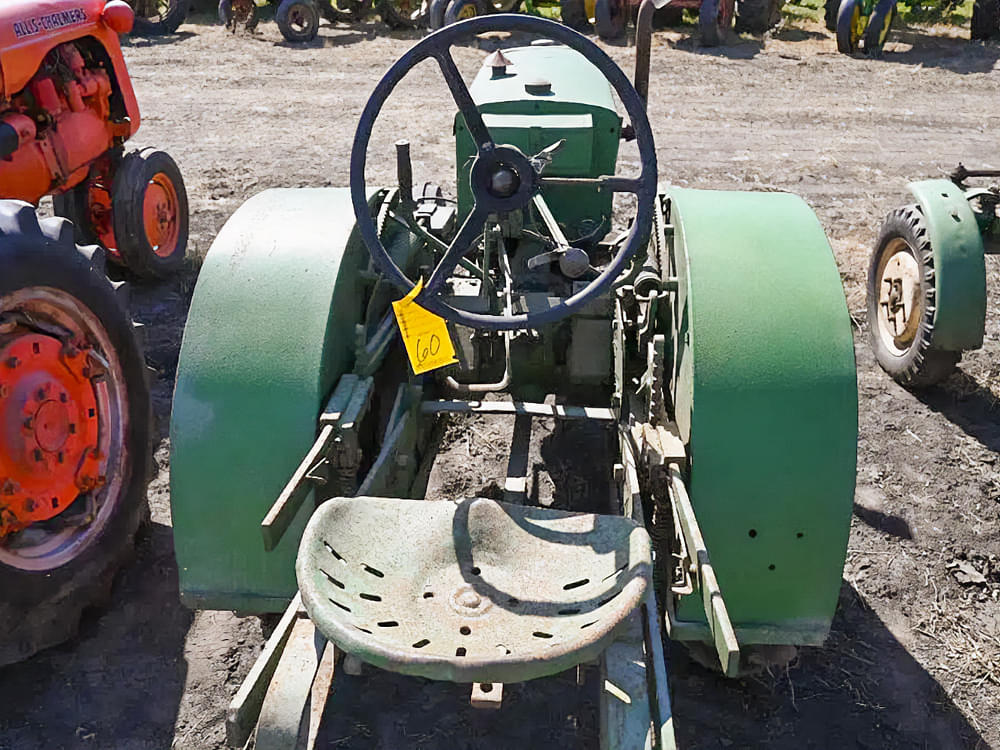
Small but mighty…
Centaur and LeRoi had built a strong working relationship over the previous decade, so when the KV series came along, LeRoi was the easy choice for engines. They went with a no-nonsense 123ci flathead four that made 22 horsepower, paired with Centaur’s own 4-speed transmission. And that gearbox? Surprisingly quick. If you were brave enough to give ‘er the onions in 4th, you’d see 20 miles an hour—no, it wouldn’t put you on the pole at Indy, but still, pretty speedy for a little tractor. It wasn’t high-tech, but it worked, and that’s what mattered to the farmers using them every day.
The Klear View, best I can tell, held its own in the market—especially in Ohio and parts east. Its compact, low-slung stance made it great for tight spaces and smaller acreages, though Centaur pitched it as being good up to 100 acres. That kind of flexibility opened the door to some niche markets, especially vineyards. Domestic sales were solid, and a few even made their way across the Atlantic. I’ll bet there are still a few tucked away in the back corners of the Loire or Bordeaux regions of France if you knew where to look.
Evolving the line
Over the next few years, Centaur did evolve the Klear View design to include an actual operator’s platform—probably a smart move, since driving without one might’ve been a bridge too far for most farmers. By 1939, with the rest of the industry moving toward more styled designs, Centaur followed suit. They rolled out several models based on the Klear View patent under the new M-series name. Most of the drivetrain components remained fairly similar to the unstyled tractors, but they did upgrade engines to a 27hp, 140ci overhead valve engine (again, from LeRoi). As far as I know, there were three: the M, M1, and M2. I’ve never seen all three side by side, but in my head, I picture the M as the most compact, the M1 somewhere in the middle, and the M2 as the biggest of the bunch.
Ditch duty & statewide service
Centaur’s next move was a municipal play. While there were lots of M1s and M2s that were sold to farmers, Centaur also built M‑series tractors with side‑mount sickle bars for the state of Ohio and even sold 200 units to the Pennsylvania Railroad. Perfect for mowing roadside ditches and keeping right‑of‑ways tidy.
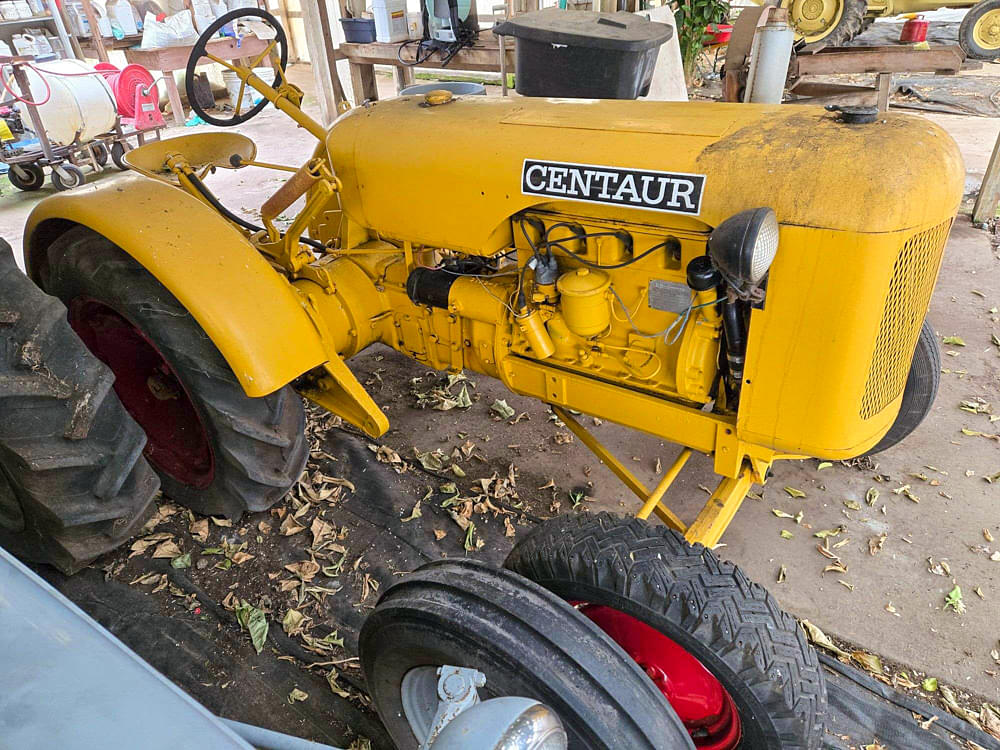
Paying the piper
Things were looking good, but behind the scenes, it wasn’t all sunshine and roses at Centaur. They’d racked up significant debt during the thirties, and by 1940, the bills came due. Fortunately, their longtime engine supplier, LeRoi, stepped in and purchased the company on December 26, 1940. I think it’s quite possible that LeRoi was one of the creditors as well. However, from what I can tell, Centaur was allowed to keep operating more or less independently out of their Greenwich, Ohio facility. They kept building tractors until 1941, when duty called and the factory switched over to making gearboxes for military vehicles and components for tank turrets. After the war, they picked back up and returned to building tractors once again.
One last hurrah
All wasn’t lost after the wartime pause. In fact, picking up where they left off may have been easier than expected—especially with closer collaboration between Centaur and the LeRoi team up in Milwaukee. In 1945, they introduced a new industrial tractor called the Tractair, which found surprising success with both the U.S. and Canadian militaries.
It was a good bit larger than anything from the KV or M-series lines, powered by a 226 ci inline six-cylinder rated at 35 horsepower. But this wasn’t just a bigger tractor—the Tractair had a clever trick under the hood. Only four of the six cylinders were used to generate power. The remaining two? They ran an onboard air compressor that filled twin air tanks mounted on either side of the machine. Pretty innovative stuff for the time. Aside from its military use, I’ve heard it also found favor in the mining industry—perfect for running air hammers and other pneumatic tools in the field.
Centaur rides into the sunset
Sadly, the Tractair 105—built from 1945 to 1954—would be the last machine to carry the Centaur Tractor name. That year, LeRoi was purchased by Westinghouse, who also acquired the tractor facility in Ohio. Not long after, Westinghouse quietly discontinued the Centaur brand. An updated version of the Tractair, branded as the LeRoi Tractair 125, stayed in production until the mid-1960s, but Centaur’s name was officially retired.
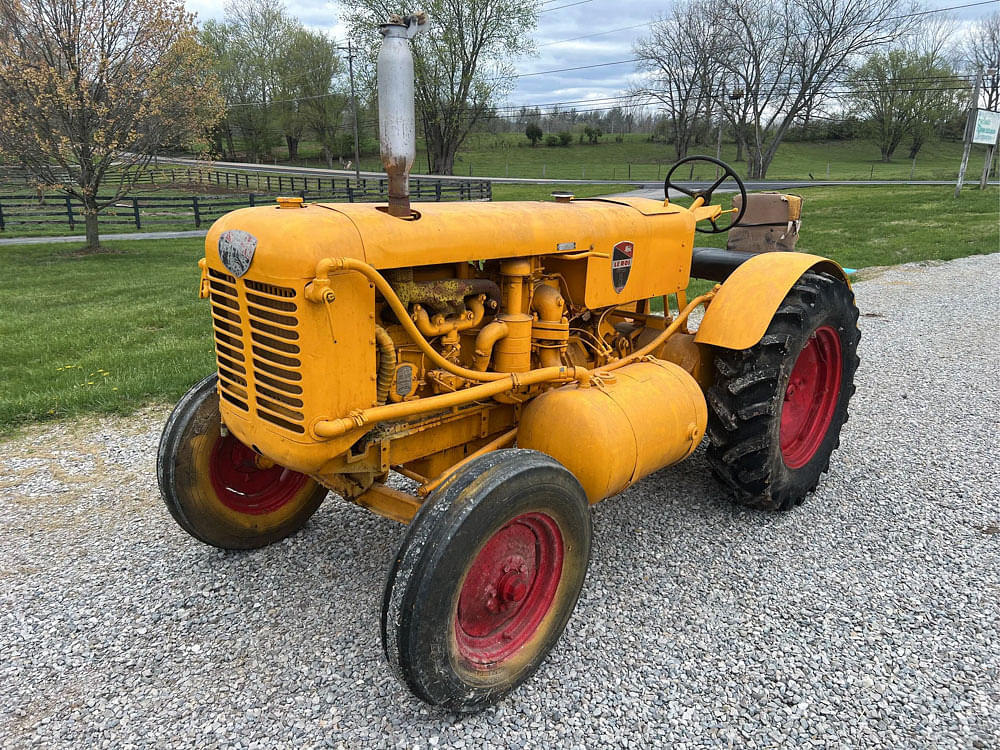
All tolled, Centaur Tractor built machines for a little over 30 years. True to their advertising, they weren’t flashy or revolutionary—just a solid, dependable alternative to a horse. Still, they helped move a generation of farmers into the modern age, and that counts for something.
The real shame? When the company’s records were moved to Westinghouse’s corporate office in Sidney, Ohio, most of the production documentation was lost or destroyed. Nobody knows exactly how many tractors they built—or where most of them ended up. All that remains are the machines that somehow dodged the scrapyard, quietly telling their story one faded badge at a time.
Speaking of the ones that haven’t rotted away, that brings us to the one you can buy this weekend!
Harold Walters’ Centaur M1
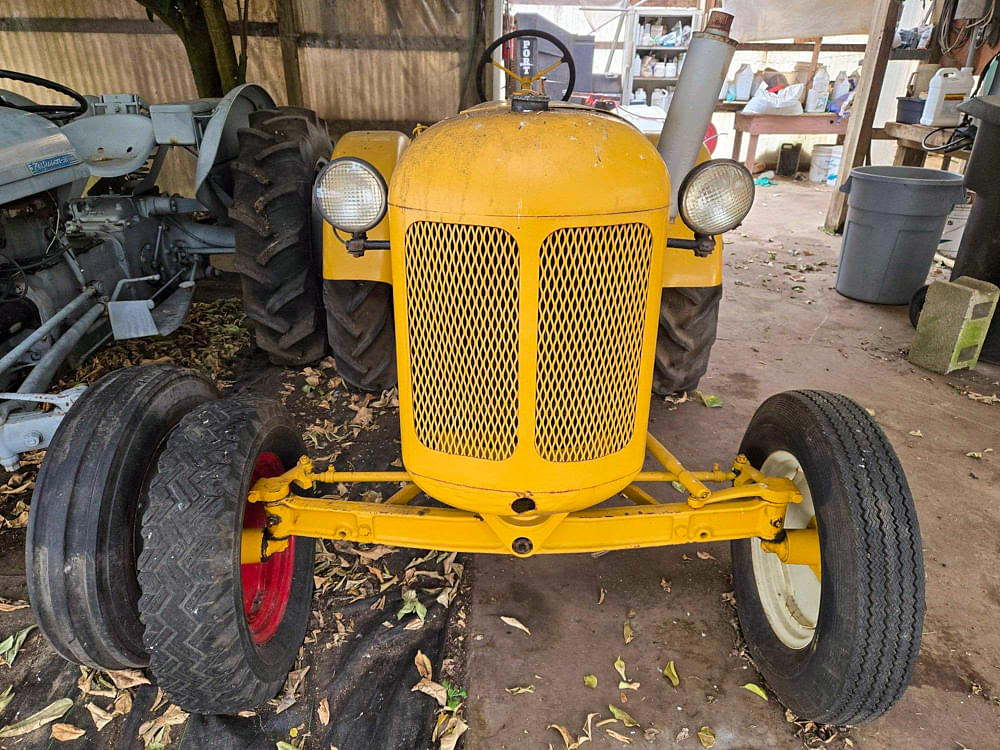
This story is about more than just the history of Centaur Tractor, though. Every tractor has a story to tell, and this particular one could probably tell quite a few stories its caretaker—a man named Harold Walters.
Harold passed away this past December at age 95—just as he’d lived: quietly devoted to faith, family, and farming—specifically, horticulture. From what I gather, he was a man who cast a tall shadow in his community, though he’d likely be too humble to admit it. A lifelong West Michigan resident, Harold married his wife Genevieve shortly before he shipped off to war in the 40s. When he came home, he went to work for Walters Gardens—his brother Dennis’ business, started a family, and eventually founded Harold Walters Nursery, a greenhouse focused on succulents. Over the next seven decades, the family’s operations continued to flourish, and the Walters family name has become synonymous with plants in the Hudsonville area and horticulture worldwide.
I’m not totally sure when Harold began collecting tractors. However, as I looked through the catalog, one thing was clear. He focused on the iron he’d known as a young man: late‑’30s, ’40s, and ’50s models. It doesn’t seem to me that a single color or brand defined him; there’s a little bit of everything in the collection. Deere, JIC, Allis, Farmall, Cockshutt, Oliver, and a few oddballs here and there too—like this Centaur M1. From the outside looking in, it seems like he simply admired honest engineering and the machines that had put crops in the ground when he was younger, y’know?
Wrapping up

This Saturday, that little Centaur will cross the block, and auctioneer Art Smith will find it a new home, along with all of the other tractors in the collection. And like many estate auctions, while I’m certain it’ll be well-attended, I doubt there’ll be a great deal of fanfare. Harold likely wouldn’t have wanted anyone to make a big fuss. However, I’d hope that those in attendance will take a second to tip their hats to his legacy…and to one of the “okayest” tractor brands of the era! (Their marketing team said it, not me!)
Here’s the link to the collection listing on Tractor Zoom. If you’re headed towards Hudsonville for the sale, I’d get there early.

